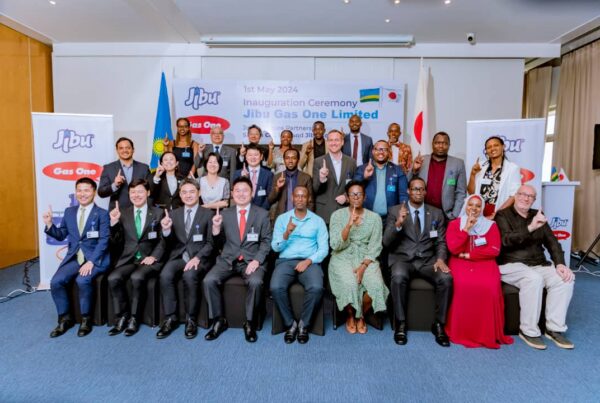Jibu Board member Dr. Litalien is the founder and principal of Franchise Well, a specialized consulting practice supporting franchise companies, prospective franchisees and nonprofit organizations interested in the franchise sector. His article “Franchise Outlook for the US in 2017,” recently published in Franchise Asia, offers an insightful analysis of changes in the franchising sector.
Prepare for Change
Franchising in the U.S. has enjoyed decades of consistency on numerous levels. Franchisors and franchisees acted predictably, marketing for franchisees was one dimensional, and the regulatory environment was generally stable. Now franchising in the U.S. is in the midst of the most disruptive period it has known. Welcome to the new normal in franchising…a period of constant change.
Every aspect of franchising is on the table and there is no end in sight. The number of companies using the franchise model has exploded with over 3,500 actively pursuing a slower growing pool of candidates, according to FranData. State regulators have stepped up activity and oversight of registrations, increasing franchisor costs and seeking to shift the model towards franchisee empowerment. Broker networks seemingly exceed the pool of candidates, offering to find the right “fit” for every prospect and exacting 50% or more of the franchise fee for doing so. The National Labor Relations Board’s pursuit of independent contractor business models sent shockwaves across the franchise sector last year, sending many franchisors into panic- mode to revise their manuals and evaluate their practices, and it persists in 2017.
An unparalleled generational shift, led by almost 100M millennials further isolated franchisors and franchisees, both struggling to figure out how to effectively communicate. Yet, the value of the franchise model has never been higher as financial firms have developed a penchant for the annuity-like returns. Valuations have risen to questionable proportions creating more winners and losers, and the pool of strong acquisition targets is diminishing which is exacerbating the market. For franchise companies in the U.S. and those interested in coming to the market, here is a deeper look into a few of the most pressing issues top keep in mind.
Franchise Development
The success of the franchise model has attracted an increasing number of entrepreneurs to bring literally hundreds of new offerings to the market annually, many from overseas, each ofwhich must compete for a modest pool of prospects. While in the past these new concepts could solicit a “franchise packager” to turn their model into a U.S. ready system, the results of that may not be as effective as a much more customized approach will be needed. The proliferation of the brokers provides these new franchise entrants with a “turn-key” solution to their franchise development needs, by identifying interested candidates and connecting them to a potential franchisor. While that seems simple enough, there just may not be enough quality candidates to go around in 2017.
Yet, those that chose to go direct to the market will find it increasingly difficult to attract prospects using traditional approaches such as trade shows, outbound campaigns and internal referrals. Franchise Development staff will need to put away their “shotgun” approaches and get out the “sniper rifle” to target prospects with the right characteristics for the concept. And, when a franchisor identifies a high-profile target, they will need to go after them with new fervor to ensure they choose them over the growing number of direct and complimentary substitutes. This year, renewed efforts should be placed on bolstering existing franchisees that are not realizing the full potential of their franchises to ensure systems are not losing ground on the market. This requires a fresh look at franchise support staff capabilities, their time spent with franchisees and what is in their “toolkit” to help close performance gaps.
The Widening Communication Dilemma
The most chronic issue facing franchising in 2017 is internal communications. Dramatic generational shifts are taking place as millennials, those ages 20 to 35, have entered the workforce and their mindset is significantly different than their predecessors. According to generational researcher and author, Jamie Notter, he suggests in his book When Millennials Take Over, they need work environments that are “digital, clear, fluid and fast”. Coupled with the growing diversity of franchisees (e.g. more women, more minorities, more veterans and more foreign owners) franchise systems must evolve their communication strategies to create more consensus, become more inclusive and promote more franchisee-to-franchisee engagement.
Furthermore, the franchise offers couched in the cookie-cutter model of the 90’s must now give way to innovative models including quasi-franchises and hybrid agreements. Also, the ‘Franchise Advisory Council’ and ‘National Ad Fund Council’ approaches should be revisited with an eye towards more franchisee engagement, more localization of the marketing and more monitoring on their impact on elevating brand value. More diversity in the composition of these groups is needed, along with more feedback loops from franchisees across the network to build consensus. As more millennials enter the franchise sector this year than ever before, it is critical franchise leaders prepare to embrace them as employees, franchisees and supply partners. Failure to do so could led to catastrophic results. Likewise, franchise offering documents and agreements should be reviewed to ensure they are timely and well-balanced.
As more diverse groups enter the franchise arena they desire transparency in all aspects of the offer, reasonableness in the agreements and fairness in the benefits from success. As regulatory bodies review franchise documents, they are increasingly looking for the same recipe. All too often, franchisors just “update” their offers annually with minimal changes. 2017 is a year for a complete rewrite of the offer, agreements and manuals.
Renewed Focus on Innovation
Historically, when a business reaches a plateau in their lifecycle they either reinvent themselves or fall into decline, which if left unchecked can lead to obsolescence as in the case of Blockbuster and Radio Shack. Franchise systems are reticent to embrace innovation given the rigidity of the model. Rarely do franchisees like or embrace change, and there is really no good time in the franchise lifecycle to require it. For example, when should a franchisor upgrade their software platform? It is a very disruptive event given new franchisees just figured out the old model and mature franchisees don’t want the investment cost or learning curve.
Consequently, franchising lags traditional company innovation cycles. In 2017 it will become necessary for more franchise systems to release the shackles on innovation, develop deliberate and strategic plans for advancing their brands, and renew many tired systems. The velocity of change in the marketplace requires much shorter lifespans for most products and services, and franchising will have to join this fray to remain competitive with Uber, Facebook, Zappos and the myriad of others that use innovation as a core differentiator.
Susan Reed, founder of Edge Dwellers suggests that franchise companies have a limited understanding of the strategic value of innovation. “Franchisors rarely understand how they stack up compared to their competition, thus they don’t know what type of innovation is needed to compete”. Prospective franchisees would do well to pay attention to the innovation activity of franchises they are interested in pursuing.
Finding the Right Fit
Franchisee selection has been widely discussed over the years, but in the current fever-pitched arena to secure new franchisees, it has become easier to rationalize accepting a broader array of candidates. While the pain of such a decision is not quickly felt, given the decade or longer average lifespan, it can be debilitating over time. This year franchisors should be even more discerning when deciding who to let into the network as an insurance policy on support costs, underperformance, closed units and reduced overall valuations.
The reliance on broker networks can eat up much of the upfront fees franchisors once enjoyed, but the lifeblood of any franchise organization is the long-term royalty stream, and that come this year to gain a fuller understanding of what drives success within their concept and be guarded against allowing candidates into the network that don’t demonstrate those factors. This takes tremendous discipline in an environment where candidates are harder to come by, financial owners want growth, and high valuations are driving decision-making. Likewise, franchise prospects are in the best position ever to leverage their status when considering a franchise. It’s a buyers’ market in the U.S. and high quality candidates should not be reluctant to “negotiate” all aspects of the offer.
Rising Above the Ordinary
This year in franchising will likely produce a widening group of winners and losers, and require franchisors and franchisees to be willing to accept change to reflect the dynamic marketplace and leverage opportunities. Too often, however, change is not made because of a lack of confidence in what change is needed. The franchise sector would do well to take some time in 2017 and plot an effective change management course for the future. Franchise systems that do it effectively in 2017 will rise above the ordinary.






